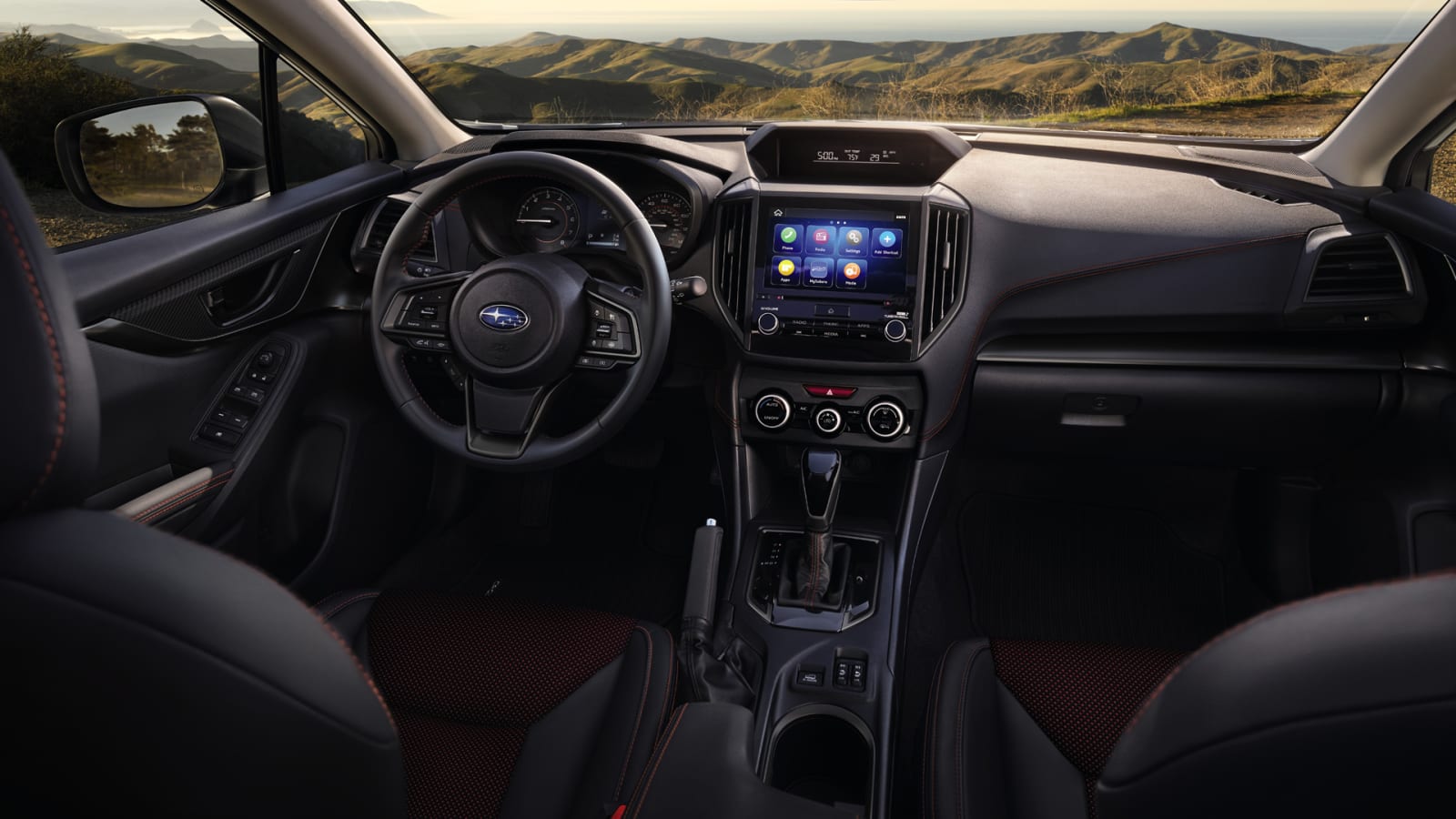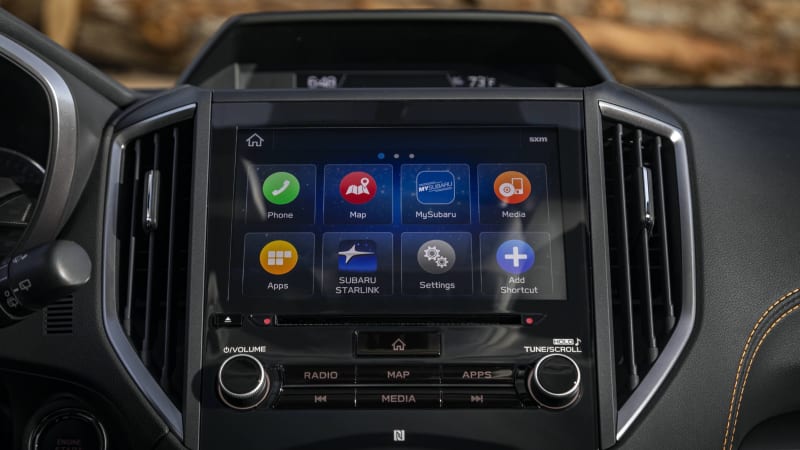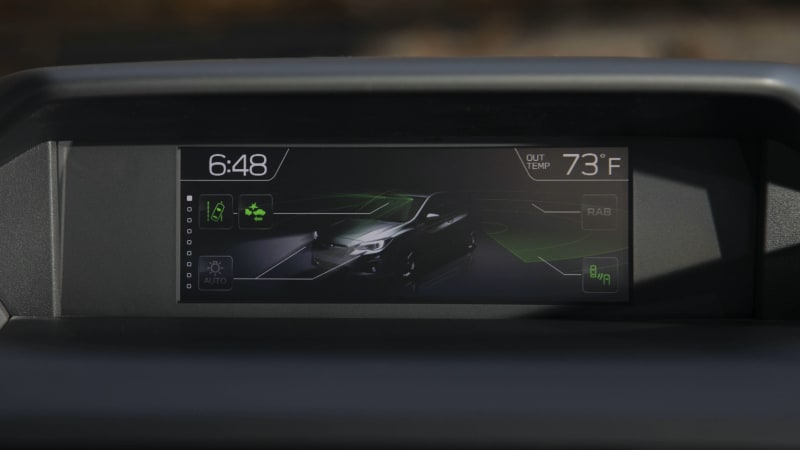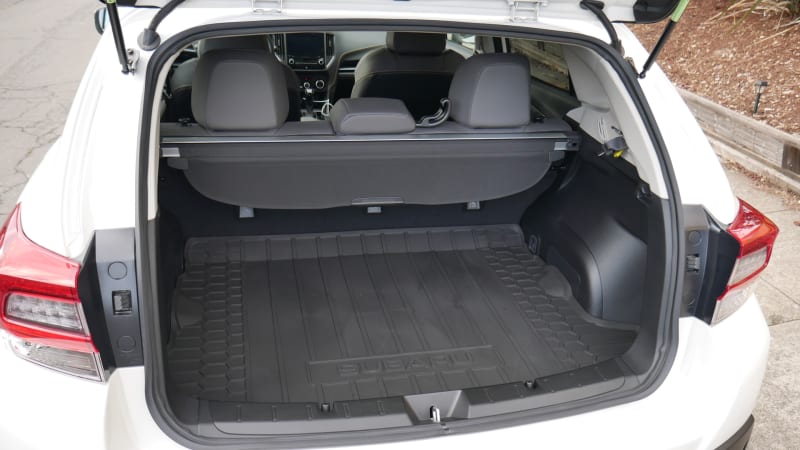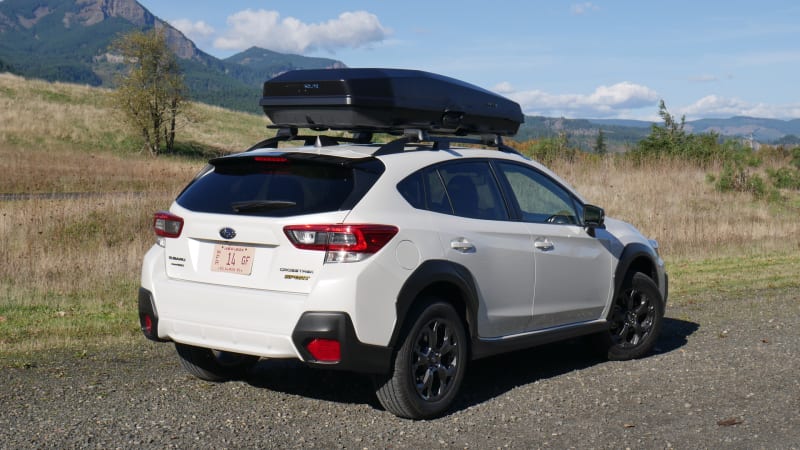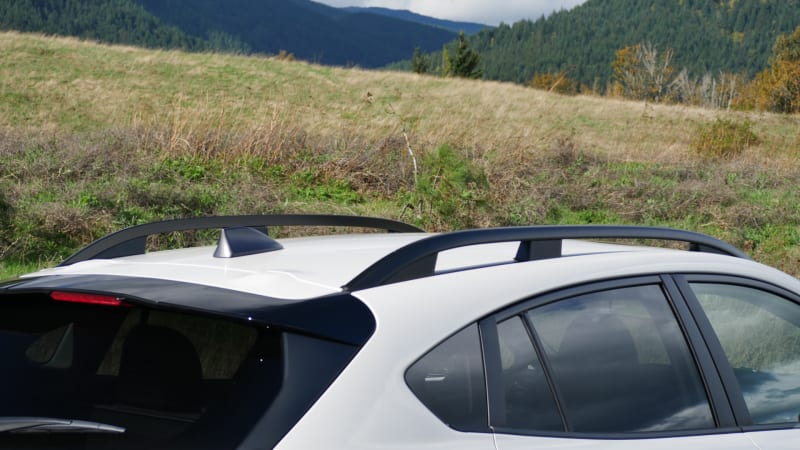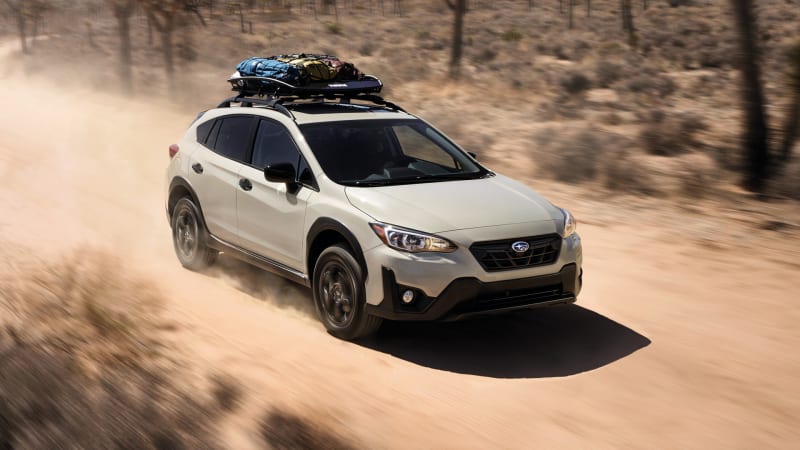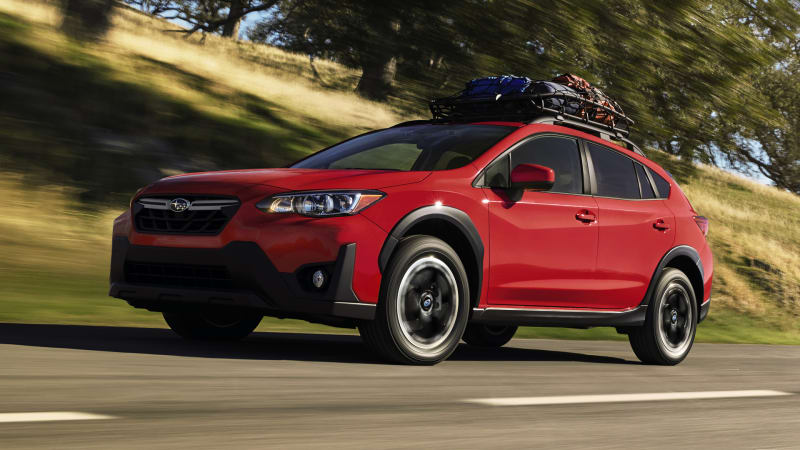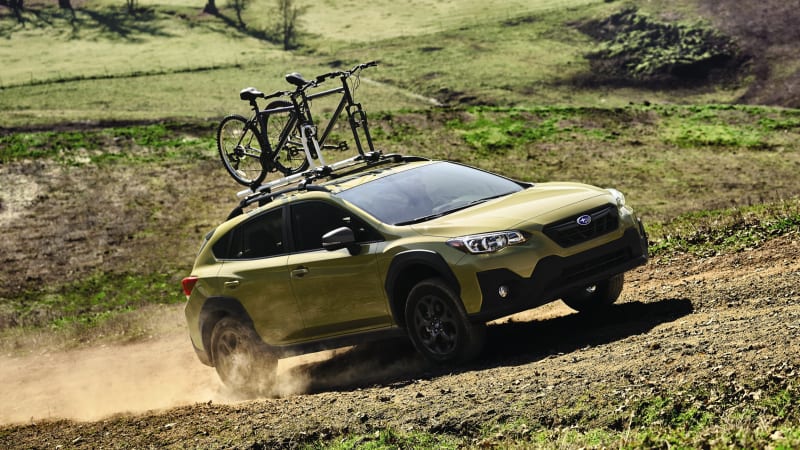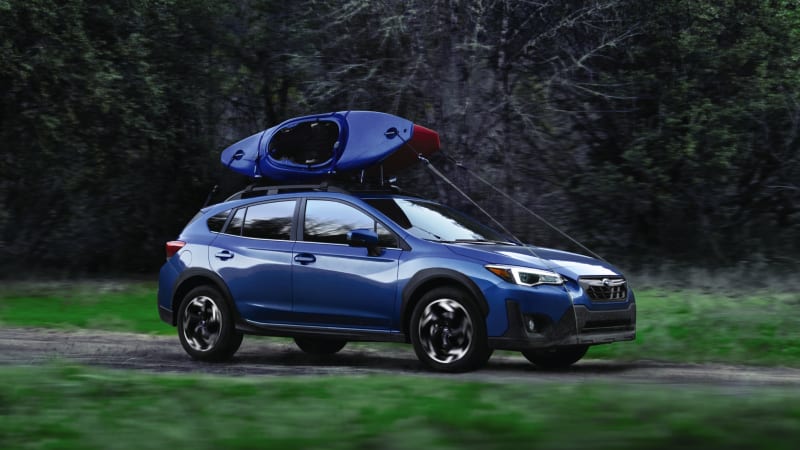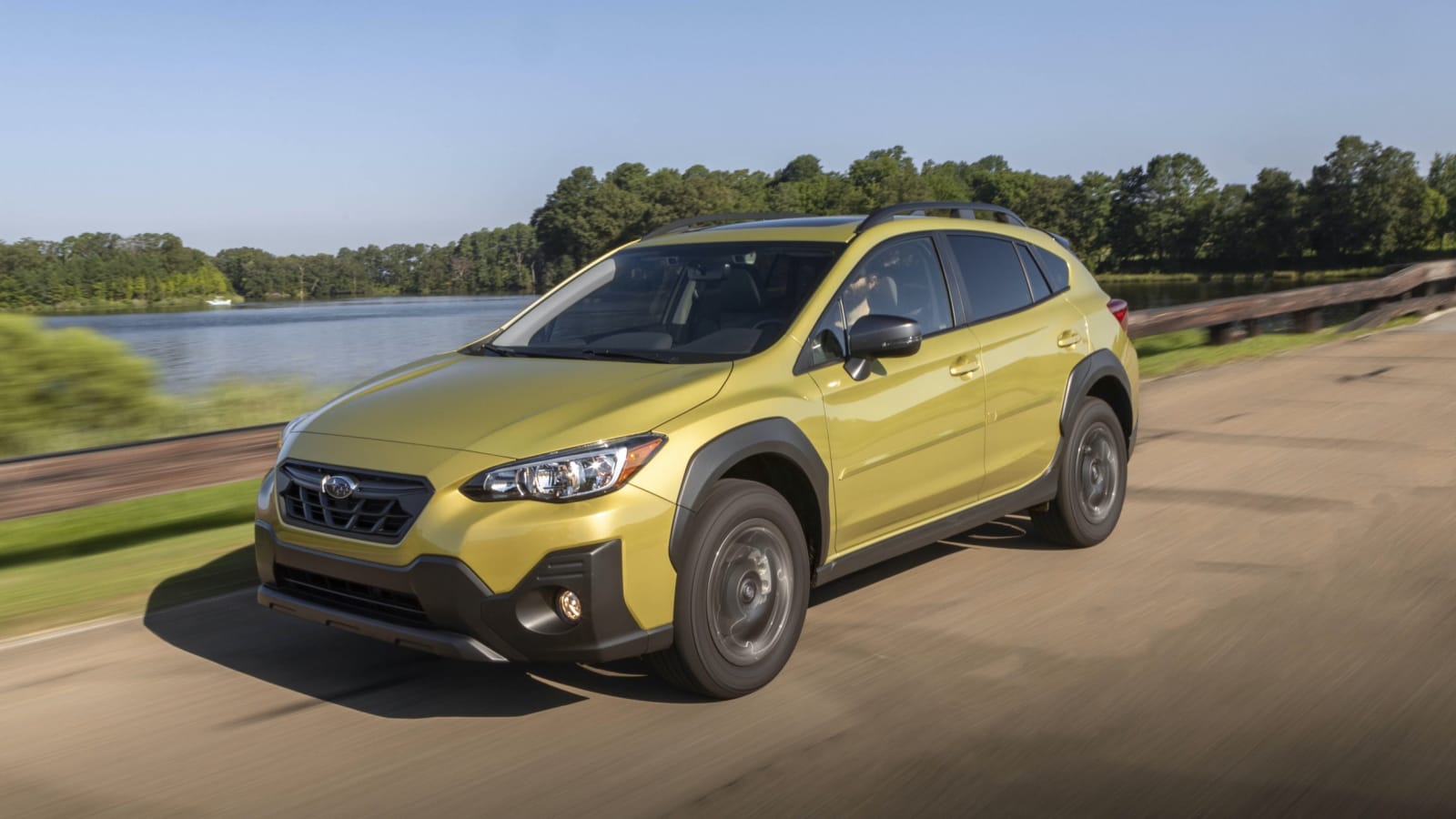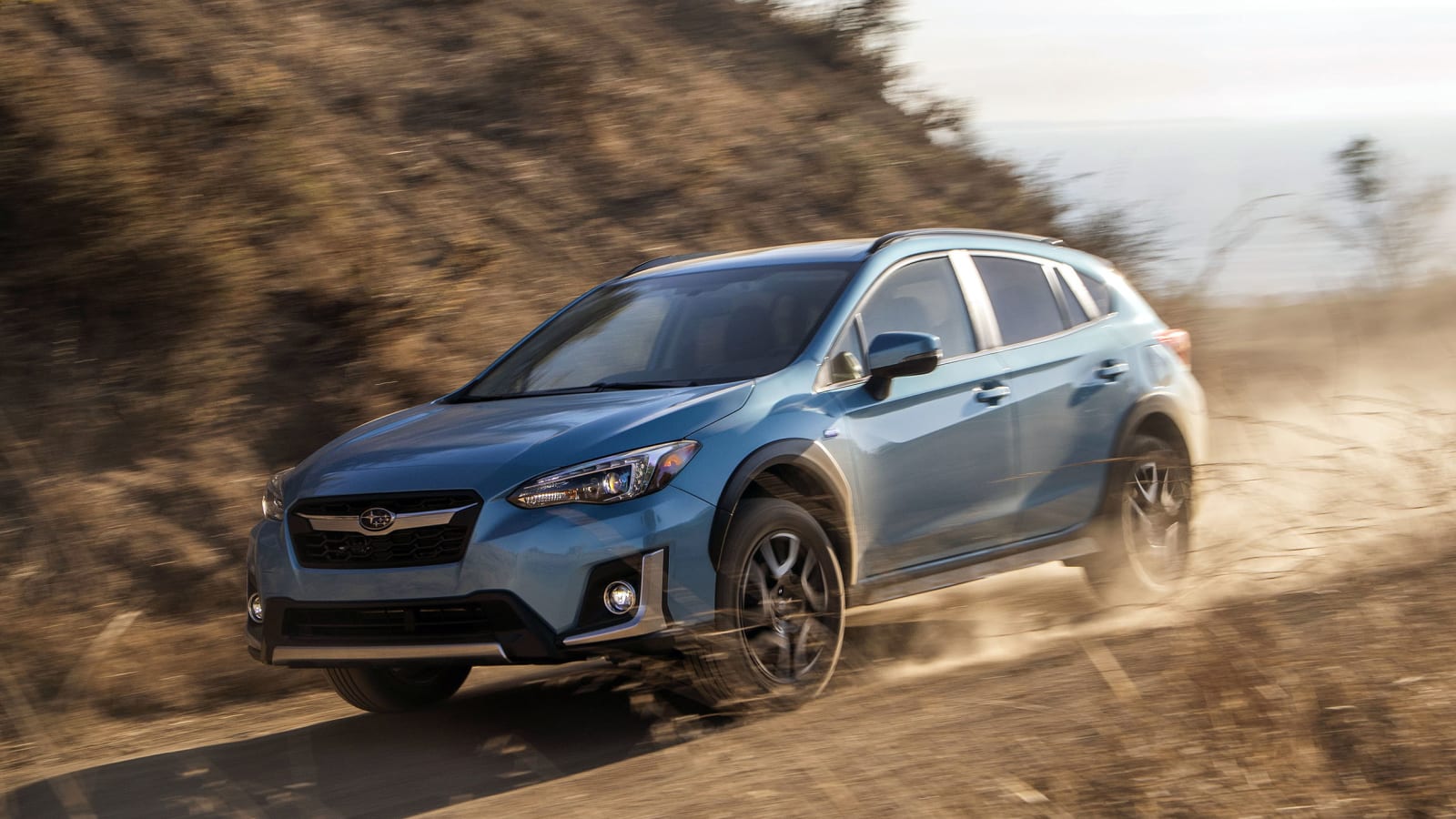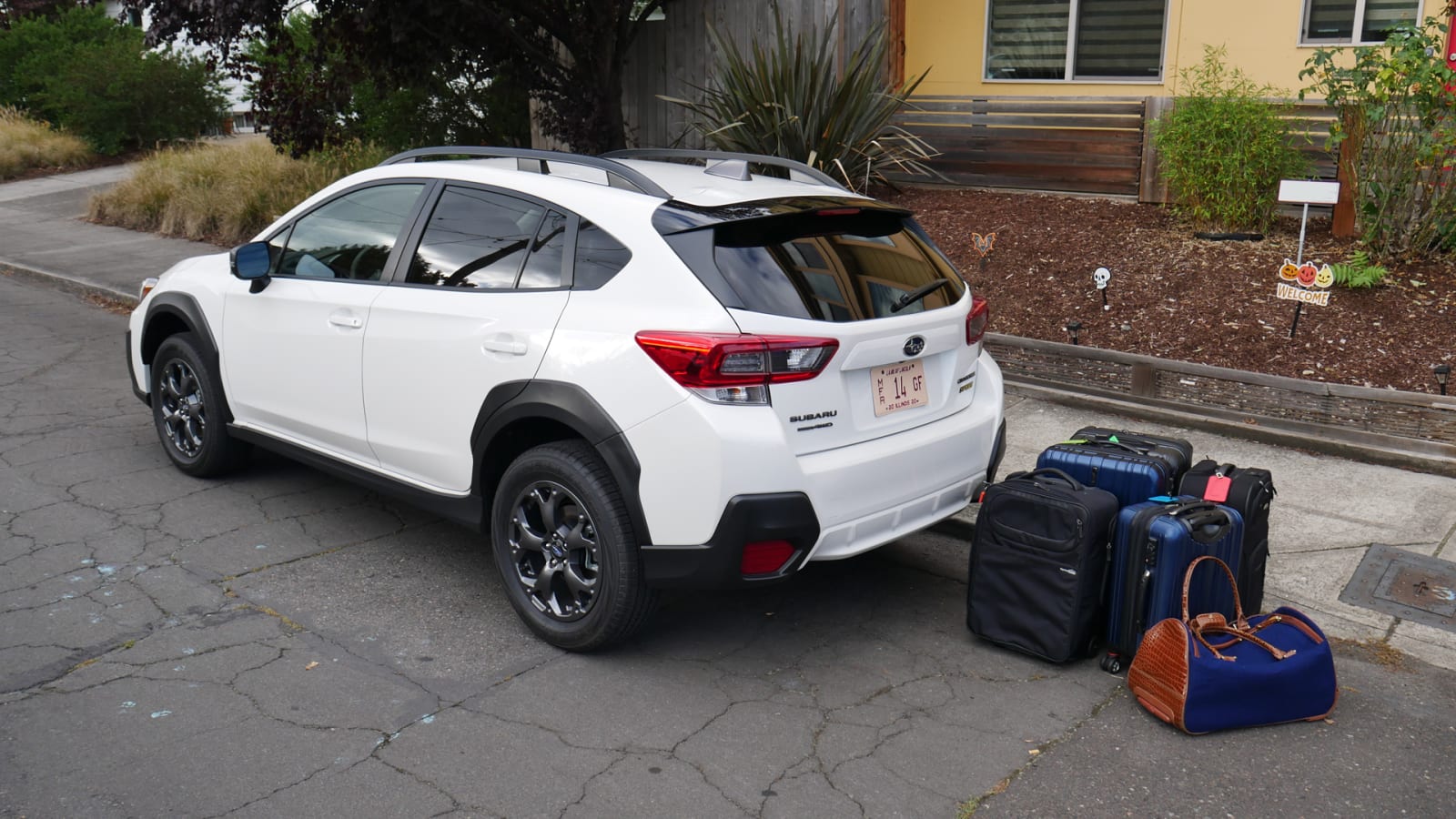2023 Subaru Crosstrek Review: Simple, capable, sells like hotcakes
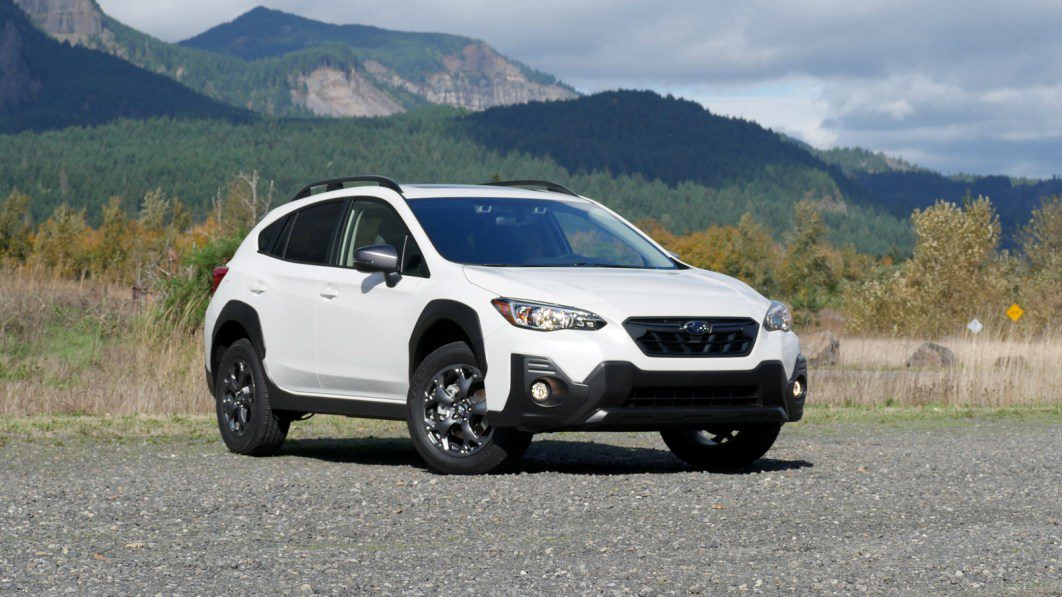
Pros: More capable than similarly priced SUVs; good fuel economy; standard AWD; real roof rails
Cons: Slow base engine; roly-poly handling; some head-scratching interior controls; Hybrid’s iffy value
If you read this 2023 Subaru Crosstrek review and go, “Hey, that sure seems like the car for me,” make sure to get cracking on contacting a dealership, because you’re going to have to act fast. Turns out the Crosstrek is the fastest-selling car in the United States, meaning it takes only 12.9 days on average to sell once it arrives on a dealer lot. It seems that the combination of an efficient engine and an adventure-ready all-wheel-drive hatchback with an almost comical amount of ground clearance makes a lot of people go, “That sure seems like the car for me.”
And yes, we just called it a hatchback, because even if “crossover” and “SUV” get thrown around a lot, the Crosstrek is really just an Impreza hatchback with some body cladding, chunky roof rails and that comical lift. It’s way cooler as a result – more capable, too – and serves as a way for the Crosstrek to be an alternative to at least two size segments of small SUV and compact hatchbacks like the Mazda3 and Honda Civic. Perhaps that’s another reason for its popularity. That it’s no longer so dang slow (OK, some versions are still dang slow) makes a big difference, too, as does a ride tuned for comfort.
Considering how allergic Americans seem to be to hatchbacks, it’s a little surprising that the Crosstrek’s enhancements provide enough automotive Benedryl to make it popular. Yet, this simple, versatile and capable little (whatever it is) is nevertheless a hit, and we definitely recommend checking it out. Just make sure to do it quickly.
Interior & Technology | Passenger & Cargo Space | Performance & Fuel Economy
What it’s like to drive | Pricing & Trim Levels | Crash Ratings & Safety Features
What’s new for 2023?
A new Special Edition debuts featuring an exclusive paint color (Desert Khaki), black wheels, and unique interior finishes that includes red fabric seat centers and interior stitching (pictured below).
What are the Crosstrek interior and in-car technology like?
The interior is comfortable and feels light and airy due to its upright pillars and plenty of glass. Apart from some fun-colored trim, it’s not particularly exciting to look at, but the plastics are all high quality pieces and upper-trim models get two-tone seats and, depending on trim level, yellow or orange accents. Those do a good job of keeping the interior from feeling like an all-black sea of sameness.
There are buttons and dials for the radio and climate controls, which we appreciate. A 6.5-inch touchscreen comes standard; an 8-inch is available on the Sport and Limited (pictured below left). Both are refreshingly simple, painless to use and feature large icons. Apple CarPlay and Android Auto are included.
The main tech annoyance is that various vehicle functions are displayed and controlled through the touchscreen, an instrument panel display and Subaru’s distinctive dash top display (below right). The latter two displays are operated using buttons on the steering wheel. It’s always confusing to know which of the three possibilities controls what, especially driver assistance functions … or whether it’s just a stand-alone button.
How big is the Crosstrek?
Here’s where the Crosstrek really being a hatchback comes into play. When comparing specs, it’s important to remember that cars are packaged differently than more SUV-like vehicles – in short, an SUV’s seats are higher and more chair-like. That means they can provide sufficient legroom despite the two seating rows being close together. The Crosstrek is technically a car – it’s seats are further apart – which means that despite what the specs may say, it still has plenty of space for four 6-foot-tall passengers to fit comfortably. There’s also a stronger chance that a front passenger will be able to sit comfortably in front of a rear-facing child seat.
There’s 20.8 cubic feet of cargo space behind the rear seats and 55.3 with those seats folded. That may be less than the shockingly spacious Nissan Kicks, but it’s more than every other subcompact and pretty comparable to various midcompact SUVs. The area is deep and wide, which makes up for its comparative lack of height. You can read our real-world cargo capacity test here where we managed to fit six pieces of luggage back there. A word of warning, though: none of the above applies to the Crosstrek Hybrid. Pictured above right, its battery pack raises the cargo floor considerably and thus greatly reduces space both on paper (15.9 cubic-feet) and in terms of what you can actually store back there since it reduces the cargo area’s height even more.
This makes it even worse than the Crosstrek Hybrid only has less versatile flush roof rails (they’re more aerodynamic) for storing extra stuff up on the roof. Every other Crosstrek’s standard roof rails are big, sturdy and are of the raised design, meaning you can use your own crossbars of choice that can most likely be transferred between cars. The Crosstrek’s roof is also lower than the typical crossover SUV, making it easier to load things up top. Ask us how we know …
What are the Crosstrek fuel economy and performance specs?
The Crosstrek’s base engine is a 2.0-liter four-cylinder that makes 152 horsepower and 145 pound-feet of torque. That modest stable of ponies is sent through a standard six-speed manual transmission or an optional continuously variable automatic. All-wheel drive is standard across the board. Subaru says this base engine can push a Crosstrek to 60 mph in 9.7 seconds, which is very slow, even for this segment of slow vehicles. CVT-equipped 2.0-liter Crosstreks get EPA ratings of 28 mpg city, 33 mpg highway and 30 mpg combined. The few shift-for-yourselfers who choose the standard six-speed manual fare far worse with EPA ratings of 22/29/25.
Sport and Limited models come standard with a 2.5-liter four-cylinder with 182 hp and 176 lb-ft of torque. Subaru says Crosstreks equipped with the larger engine can do 0-60 in a far more competitive 8.2 seconds, a time achieved (for some reason) with a driver, a passenger and a dog onboard (Great Dane or Chihuahua? Subaru didn’t specify). The bigger engine doesn’t have a noticeable effect on fuel efficiency. The larger 2.5 gets basically the same fuel economy at 27/34/29, so if you can push the budget, definitely get the Sport or Limited.
Buyers looking for the most fuel efficient Crosstrek will want to look at the plug-in hybrid version. It pairs a 2.0-liter engine with a pair of electric motors and an 8.8-kWh lithium-ion battery pack supplied by Toyota. Total power output for the hybrid drivetrain is 148 horsepower. Unfortunately, the plug-in is only good for a modest 17 miles of all-electric range. On the other hand, it’s rated at 90 MPGe combined gas and electric, and a solid 35 mpg combined on gas only. Additionally, it doesn’t take long at all to charge it up. It’ll refill in about two hours on a Level 2 charge, or five hours on a regular household 120-volt outlet. Just take note of the compromised cargo area described above.
CLOCKWISE FROM UPPER LEFT: Special Edition, Premium, Limited, Sport
(Subaru wants to make it very clear that you can put stuff on the roof)
What’s the Crosstrek like to drive?
The base 2.0-liter takes an agonizingly long time to get up to speed, something noticed by our editors and current Crosstrek owners alike. As such, we strongly recommend stepping up to the 2.5-liter engine. It doesn’t remotely turn the Crosstrek into a rocketship, but it does slide this 3,300-pound vehicle up the scale from underpowered to sufficiently powered. Passing maneuvers no longer elicit panic, and freeway onramps don’t immediately send the engine/CVT combo to dronesville.
Really, the added power was all the Crosstrek needed. It rides well, with good comfort from what feels like greater suspension travel than subcompact SUVs like the Hyundai Kona and Toyota C-HR. There’s quite a lot of body roll in quick transitions (lifting a compact hatchback to a ride height greater than most SUVs tends to do that), but in this class of vehicle that’s a reasonable tradeoff for big-bump cushiness. The Crosstrek’s steering is a little overboosted and numb, but we appreciate the quick 13:1 steering ratio that makes the car feel nimble and quick to change direction with a light flick of the wrists. It’s also noticeably more responsive and confidence-inspiring than the rather inert steering of an Outback or Ascent.
Drivers with sporty intentions may also appreciate the steering wheel-mounted paddle shifters on Premium, Sport and Limited trim levels. There aren’t any actual gear changes happening from the CVT, but they do lock the transmission into eight predetermined virtual gears, which is nice when setting up for a winding road or when you want to use engine braking down long downhill grades.
What other Subaru Crosstrek reviews can I read?
2021 Subaru Crosstrek First Drive
We spent a full day driving the latest version of the Crosstrek and find that the larger 2.5-liter engine is exactly what that the Crosstrek needed.
2019 Subaru Crosstrek Hybrid First Drive
Buyers who want an affordable all-wheel-drive compact crossover — a popular combination — but also want a plug and freedom from range anxiety will find plenty to like in the Crosstrek Hybrid. Just remember you’re getting less cargo-carrying capability.
2021 Subaru Crosstrek Luggage Test | How much fits in the cargo area?
It doesn’t look very big, but the numbers say it’s better than most other subcompact crossovers. We put that to the test with actual stuff.
What is the 2023 Crosstrek price?
Pricing starts at $24,870, including the $1,125 destination charge, but that’s with the standard six-speed manual transmission. It goes up to $26,220 with the CVT.
The base car includes all-wheel drive, 17-inch alloy wheels, roof rails, rear privacy glass, a height-adjustable driver seat, automatic climate control, a 6.5-inch touchscreen, Apple CarPlay, Android Auto and a four-speaker sound system. When you opt for the CVT (be it the base or Premium trim levels), you also get Subaru’s EyeSight driver assistance systems (see Safety section) along with Intelligent and Sport drive modes, hill-descent control and a color instrument panel display.
A wealth of worthwhile features show up on the Premium including automatic headlights, a sound-insulated windshield, heated seats, upgraded upholstery, a leather-wrapped steering wheel, two front USB ports, a six-speaker sound system, satellite radio and a CD player!
Things then split in three directions. The new Special Edition is basically a Premium with an appearance package consisting of red interior stitching and upholstery accents, black wheels and a special Desert Khaki paint color. The Sport is comparable to that, albeit with yellow accents, but steps things up mechanically with the 2.5-liter engine and off-road drive modes. The Limited also builds off the Premium and includes the 2.5-liter engine, but goes in a more upscale direction with leather upholstery, a power driver seat and 18-inch wheels. We’re not sure if its orange accents are more upscale, but it has them. The 8-inch touchscreen you see pictured above is an option on the Sport and Limited, but comes standard on the Special Edition.
All prices above include the $1,225 destination charge. All include a CVT unless otherwise indicated with “6MT” for the manual transmission.
Base 6MT: $24,870
Base CVT: $26,220
Premium 6MT: $26,020
Premium CVT: $27,270
Special Edition: $27,970
Sport: $29,220
Limited: $30,720
The Hybrid is only available in one trim level that starts at $38,070. It comes equipped similarly to the Limited. A $2,500 option package adds a sunroof, navigation, a Harmon Kardon sound system and a heated steering wheel.
What are the Crosstrek safety ratings and driver assistance features?
Every Crosstrek with the CVT includes forward collision warning, automatic emergency braking, lane-departure warning, lane-keeping assist, and adaptive cruise control with lane-centering steering assist. The Limited and Hybrid add reverse automatic braking as well as blind-spot and rear cross-traffic warning systems (optional Sport).
The Crosstrek received a five-star safety rating from the National Highway Traffic Safety Administration and the Insurance Institute for Highway Safety gave it the highest Top Safety Pick award. The headlights of all trims but the Limited (it gets LEDs) were rated “Poor,” which is why the Crosstrek did not get the highest Top Safety Pick+ award.
